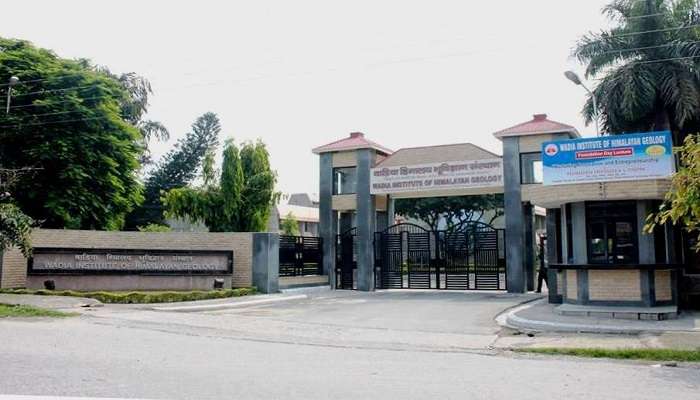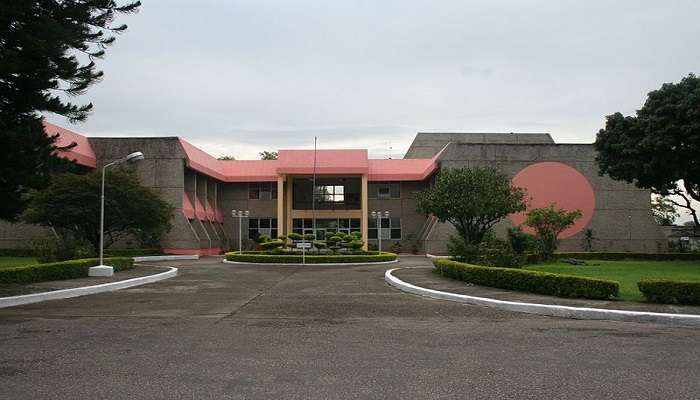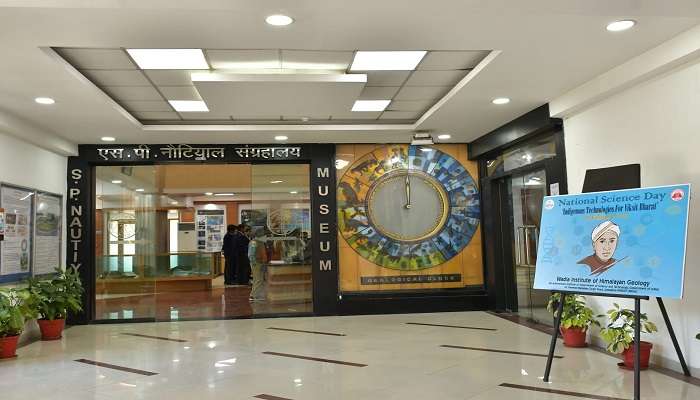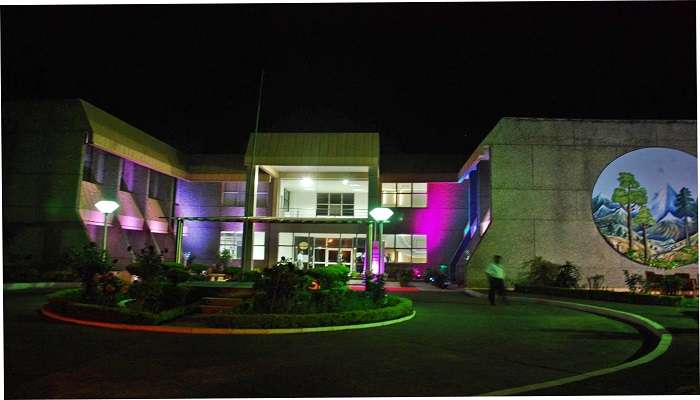Visitor’s Guide To Wadia Institute Of Himalayan Geology To Know Essential Details For 2025 Tour

Located in Dehradun, Uttarakhand, the Wadia Institute of Himalayan Geology is excellent in understanding the mechanism of geological processes and seismic activity in the Himalayan region. It was established in 1968 and named after the great geologist Dr. D.N. Wadia. Since its inception, this institution has been vital in promoting advanced research and adapting knowledge of Himalayan geology, glaciers, and natural hazards. The place provides a platform for scientists, researchers, and students whose work is based on these intricate geological formations and seismicity that shape this significant mountain range.
Wadia Institute Of Himalayan Geology: Know The Himalayas More

One can take a guided tour of the Wadia Institute of Himalayan Geology and see impressive facilities and displays of research and discoveries made over the decades. Detailed guided tours are available to gain insight into current projects, techniques adopted in geological mapping, and recent developments in seismological studies. Here, scientists come in person to let people know about the geological evolution of the Himalayas and the environmental challenges facing the region, and there are geoscientific displays of geological specimens, which include fossils and interactive exhibits explaining the dynamic geological history of the Himalayan range. The museum also has displays of geological specimens, including fossils and interactive exhibits explaining the dynamic geological history of the Himalayan range.
Whether you are a student, geology enthusiast, or nature lover interested in exploring the Himalayas for its natural wonders, the visit to the Wadia Institute takes you deep inside research in geology. The institute conducts the discharge of educational responsibilities with comprehensive experience, from the formation processes of mountain ranges to changes caused by climatic fluctuations in glaciers amid the great view of the Himalayan foothills. Plan a visit to understand the rich geological heritage and scientific pursuits that zonate the Wadia Institute of Himalayan Geology, giving innovative contributions to our knowledge of Earth’s dynamic processes in one of its most inspirational landscapes.
Must Read: Offbeat Places In Dehradun
Wadia Institute Of Himalayan Geology location

Wadia Institute of Himalayan Geology is in Dehradun, the capital city of Uttarakhand state in northern India. It is very scenic as this place lies in the foothills of the Himalayas and acts as a gateway for many hill stations and other natural attractions in the region. The campus is located at a tranquil and scenic site—really congenial for the study of Himalayan geology.
The institute is well connected by road to Dehradun city centre, at a distance of about 8 km. Dehradun is well connected to road, rail, and flights. The nearest airport is Jolly Grant, about 30 km from the Dehradun city centre. The location of the Wadia Institute is strategic, allowing researchers and visitors access to geological formations and environmental conditions typical of the Himalayas.
Workshop At Wadia Institute Of Himalayan Geology
Here are some insights and valuable details that one should know before visiting this place:
1. Priority Areas

The Wadia Institute of Himalayan Geology has actively taken up several key research topics from the Himalayas, which serve geologic studies of the formation and evolution of this mountain range at all scales in geologic time by mapping and understanding the complex tectonic processes involved in the evolution of this region. Apart from these activities, the Wadia Institute of Himalayan Geology has also been engaged in glaciological studies regarding the dynamics of Himalayan glaciers and their reaction to climatic change. This institute is also doing seismological research on monitoring seismicity and seismic hazards assessment in this region, hence being a part of disaster preparedness and mitigation.
Tip: Stay updated with the recent publications and findings of the Wadia Institute of Himalayan Geology to be aware of changing geological processes and environmental dynamics shaping the Himalayan region; follow their research on geological, glaciological, and seismology studies to be apprised of complex tectonic activity and climate influence in this critical mountain range.
Suggested Read: Places To Visit Near Dehradun within 50 Kms
2. Research Activities

Wadia Institute of Himalayan Geology conducts several research studies to enhance scientific knowhow and solve environmental problems in the Himalayas. In this connection, collaborative studies are being carried out with national and international institutions to understand biodiversity, water resources, and ecological changes affecting the Himalayan ecosystems. The Institute employs state-of-the-art equipment and methodologies, like remote sensing, GIS, and geophysical surveys, for data generation related to geological and environmental parameters. These efforts deepen knowledge about geological hazards, impacts of climate change, and sustainable development practices within this fragile Himalayan environment.
Tip: Engage in the collaborative research initiatives of the Wadia Institute of Himalayan Geology through Seminars, Workshops, and Conferences. Opportunities are presented to understand advanced methodologies like Remote Sensing and GIS applied to studies on Biodiversity, Water Resources, and Environmental Changes in the Himalaya.
3. Contributions And Impact

The Wadia Institute of Himalayan Geology research generates valuable knowledge related to scientific understanding and societal well-being. The institute also makes available its studies on the dynamic geology and changing environment of the Himalayas, contributing substantially toward formulating strategies in natural resource management, risk reduction in different natural disasters, and sustainable development. Its findings are used to inform policymakers, local communities, and stakeholders about the challenges and opportunities of living in and managing a dynamic mountainous region prone to geological hazards.
Research publications, workshops, and outreach programs by the Wadia Institute of Himalayan Geology are, therefore, of great importance for fostering scientific literacy and conservation efforts that work toward preserving the Himalayan ecosystem in the future.
Tip: It is important to understand how research conducted by the Wadia Institute of Himalayan Geology has contributed to policies and practices regarding disaster risk reduction and sustainable development in mountainous regions, as well as to the scientific literature and public outreach on increasing awareness about geological hazards and strategies for conservation in the Himalayas.
Suggested Read: Wildlife In Dehradun
Wadia Institute Of Himalayan Geology Timings

Wadia Institute of Himalayan Geology’s working days are Monday through Friday, and the general visiting hours are 10:00 a.m. to 5:00 p.m. Visitors may visit its facilities, which include a museum and research laboratories. Timings are subject to change; hence, it is always good to check in advance if any special arrangements or closures are due to research activities or public holidays.
Guided tours are provided to experience the institute’s research pursuits in geological studies and environmental monitoring programs related to the Himalayan region. Whether you are a student, researcher, or tourist interested in geology or the natural sciences, visiting the Wadia Institute will be an exceptional opportunity to appraise the Himalayas’ geologic history and environmental dynamics under professional guidance.
Further Read: Dehradun In May
Are you ready to explore the thrilling world of Himalayan geology and environmental research? Visit the Wadia Institute of Himalayan Geology to see before your eyes the groundbreaking research that they undertake. Engage with the people who live through this experience; learn the geology, glaciology, and seismic activity processes in the seminars and how their findings shape our understanding of the Himalayan ecosystem. So, plan a trip to Dehradun to unravel the mysteries of the mountains and participate in sustainable development practice in the unique but vital Himalayas region.
For our editorial codes of conduct and copyright disclaimer, please click here.
Cover Image Source:facebook
Frequently Asked Questions About Wadia Institute Of Himalayan Geology
What is the Wadia Institute of Himalayan Geology?
The Wadia Institute of Himalayan Geology, established in the year 1968, is a premiere research institute based in Dehradun, Uttarakhand, India. It was so named for Dr. D.N. Wadia, the renowned geologist. Wadia Institute of Himalayan Geology focuses on the study of the geological processes, glaciers, and seismic activity taking place in the Himalayas.
What are the theme-wise research activities of the Wadia Institute of Himalayan Geology?
Wadia Institute of Himalayan Geology is engaged in research on a wide spectrum of thematic areas, including:
- Geological studies: Mapping and understanding the formation and evolution of the Himalayan mountain range.
- Glaciology: Monitoring Himalayan glaciers and their response to climate change.
- Seismology: Seismic activity monitoring and evaluation of earthquake hazards in the region.
- The institute applies the latest technologies in remote sensing, GIS — Geographic Information System, and geophysical surveys for the collection and analysis of various data on geological and environmental parameters.
How does the Wadia Institute of Himalayan Geology contribute to scientific knowledge?
Substantially contributing to knowledge on science, the Wadia Institute of Himalayan Geology publishes its research through different research publications, conferences, and collaborative projects with institutions of national and international reputation.
Can visitors explore the Wadia Institute of Himalayan Geology and participate in educational activities?
Visitors including students, researchers, and the general public are welcomed to the Wadia Institute of Himalayan Geology for a first-hand view of the facilities and exhibits available at the institute. The institute offers guided tours, seminars, and workshops that give insight into ongoing research and environmental studies.
How can researchers collaborate with the Wadia Institute of Himalayan Geology?
Researchers at Wadia Institute of Himalayan Geology can also participate in different collaborative research projects, attend conferences, and be involved in other forms of academic exchanges. The institute also encourages partnerships between universities, research institutions, and government departments aimed at deepening scientific understanding for mitigating environmental challenges in the Himalayas.
People Also Read:
Things To Do In Dehradun Offbeat Places In Dehradun Places To Visit In Dehradun

Unveil the hidden treasures of the globe and turn every travel dream into reality. As a Content Writer, I am passionate enough to craft stories from ancient wonders to modern marvels. My words paint the picture-perfect itinerary for unforgettable experiences. Let my words be your trusted guide to immerse in the diverse culture and discover the beauty of the unknown.











